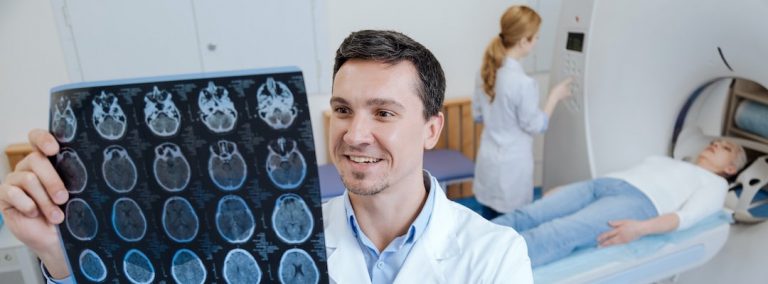WHAT IS CEREBRAL PALSY?
Cerebral palsy (brain paralysis), defined as a disorder of the musculoskeletal system, is a problem which over 17 million people in the world are fighting. This disorder develops due to a brain injury that may occur during pregnancy, birth or the neonatal period. In many cases, however, the exact cause is unknown. The injury which occurs in the brain due to any reason adversely affects the muscle and body movements of children. Since this can also be accompanied with other health problems such as ones in speaking, sight and hearing, it can lead to learning difficulties as well. Professor Memet Özek, a pediatric neurosurgery specialist at Acıbadem Altunizade Hospital, provides information about cerebral palsy.
If the baby is born blue…
Complications that develop in babies, such as brain hemorrhages, lack of blood and oxygen supply, and infection of the brain due to an infection in the mother are listed as pregnancy problems that cause cerebral palsy. The causes that lead to the disorder after birth consist of infections such as meningitis and severe head traumas. In our country, the most common cause of cerebral palsy in a baby is lack of sufficient oxygen supply during birth. The brain tissues of babies who are born blue, as well as babies whose umbilical cords get stuck around their necks and babies who are unable to cry right after birth, are the ones left with insufficient oxygen supply. The permanent damage to the brain which occurs after these leads to cerebral palsy.
The severity of spasticity varies according to the injury
Cerebral palsy, which affects muscle control and body movements in children, has varying characteristics and types which depend on the area of the brain where the injury occurs. In cerebral palsy-associated spasticity, the children suffering from the disorder experience severe stiffness in arms and legs. Since the restriction of movements depend on which area of the brain is injured, some children only have stiffness in arms while others have it in both arms and legs.
Can the baby hold his head up in the 3rd month?
It is possible to detect abnormalities in normal movements of babies born with cerebral palsy; therefore, families need to observe their children very carefully. The arm and leg movements of babies with the disorder are very limited or out of control, and the limbs hang loose. Furthermore, it is observed that these children also have limited capacity for movement due to spasticity, which is stiffness of muscles. Delays in gaining head and body control and sitting up, referred to as milestones in a baby’s development, are the first signals families should watch out for. Babies should be able to control their heads at the end of the first three months. Furthermore, they should be able to sit up without support when they are 7 or 8 months old. Parents who believe that their children are failing to develop according to this natural course should consult a specialist without wasting time.
If early stage rehabilitation is possible…
Currently, even if the brain injury cannot be treated completely, a well-planned treatment can help patients achieve the ability to lead an independent life. However, early diagnosis is critically important for such treatment. In any case, it is possible for delays to lead to serious risks. The treatment approach varies in accordance with the condition of the patient. Starting rehabilitation procedures in the early stage is particularly important. At this point, it is essential to make use of the shape-changing capability of the brain, referred to as neuroplasticity, without wasting any time. It is possible to transfer the functions of the cells in the damaged area of the brain to the surrounding cells in the brain of a developing baby. This, however, can only be done through early stage rehabilitation. Therefore, the rehabilitation procedures for premature babies who are born with brain hemorrhages before the end of the 30-week period and facing serious risk for cerebral palsy can be started even while the baby is still in the incubator. This being said, MRI scanning is a must for definitive diagnosis in babies with high risk of cerebral palsy.
Daily physiotherapy during the first three years
Since a child’s development is very rapid in the first three years of his life, rehabilitation in this period can yield very effective results. Daily physiotherapy for children with mild spasticity in particular can solve the problem to a large extent. This provides these children with the ability to live their daily lives independent of others. Treatment is intended to ensure that such children can lead their lives without the help of others and become individuals who are beneficial to the society.
Cerebral palsy does not progress but…
The brain injury causing cerebral palsy is not progressive. However, the movement abnormalities in children who do not receive treatment as they grow are progressive. In cases of cerebral palsy where spasticity cannot be alleviated with rehabilitation methods, it is essential to resort to surgical intervention without delay. Otherwise, it is possible for the condition and the related problems to become worse as the child grows. It is essential for a well-planned rehabilitation program to be applied until the child stops growing. The age of operation can vary, depending on the chosen method of spasticity surgery. The earliest age it can be done at is 2.5 or 3. When the surgical intervention for cerebral palsy-associated spasticity is delayed, a condition in which the joints are prevented from achieving full range of movement or simply become immobile, referred to as contracture, can develop. In such a case, experienced orthopedists should be consulted.

